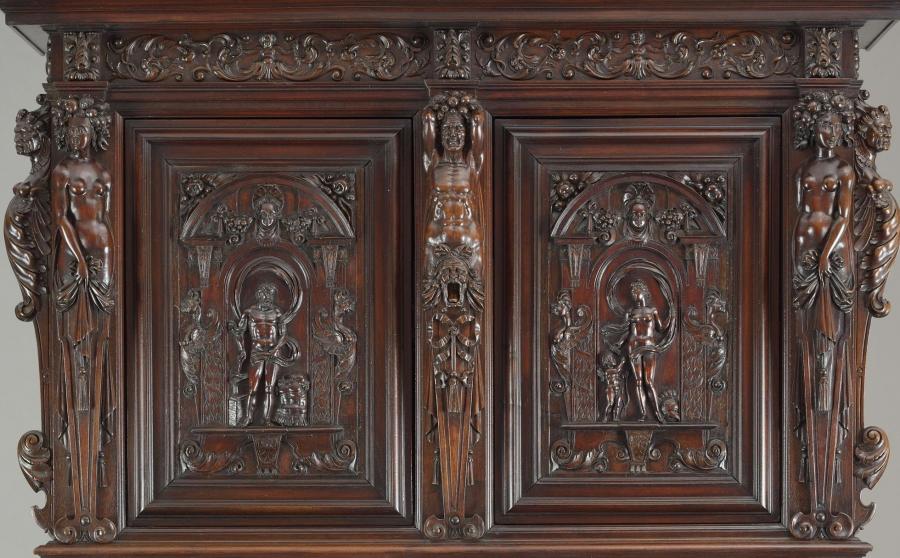Cabinet
Information sur l’artiste
France

Armoire à deux corps, seconde moitié du XVIe siècle.
Image © Lyon MBA - Photo Alain Basset
This cabinet features carved decoration in the manneristic style of the French Renaissance and is inspired by the architectural repertoire. Upright atlas and caryatids wearing crowns of fruit adorn the front face and sides at regular intervals. The drawers are concealed behind horizontal vegetal designs interspersed with masks of satyrs and lion gargoyles. Symbolic of the union between a man and a woman, some elements of the decor have erotic connotations: the door handles are concealed in the wide-open mouths of grotesque figures beneath the busts of the central atlas and caryatid. The doors on the upper half are adorned with the mythological figures of Vulcan and Venus. The divine couple, standing in the same position, gaze at one another. Vulcan is depicted in his forge with his attributes, the hammer and anvil, and a suit of armour at his feet. On Venus' right-hand side, a cupid holding a bow offers the goddess an arrow; a helmet is at her feet. This group of furniture was often offered as a wedding gift. Cabinetmakers took inspiration from books of ornamental designs, such as Hugues Sambin's famous work published in Lyon in 1572. The work by this artist from Dijon sparked a trend for decorating cabinets of this kind with caryatids.
Second half of the 16th century
Sculpted walnut
H. 212; L. 255; Dia. 59 cm
Bequeathed by Madame Ferrier in 1925
Inv. E 589





